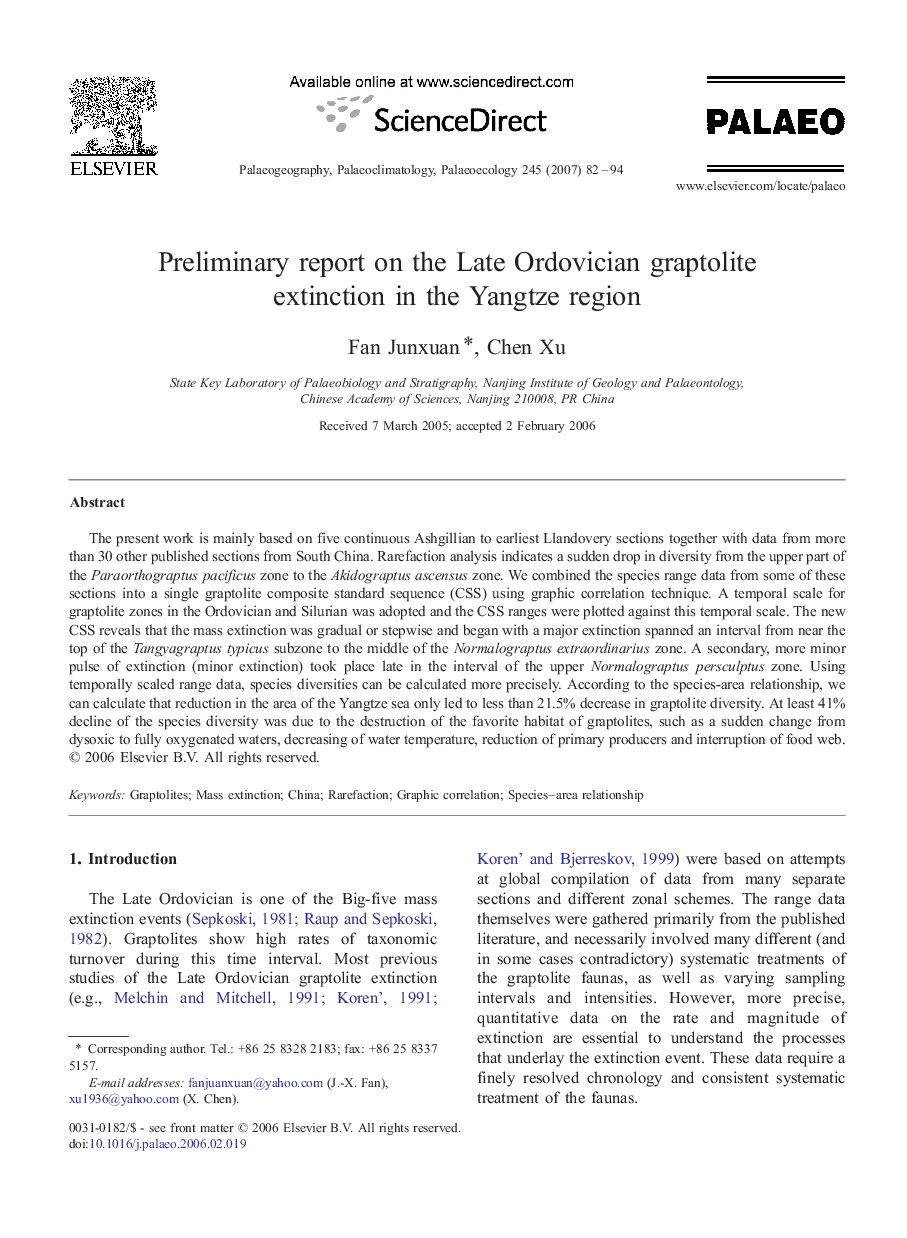| Article ID | Journal | Published Year | Pages | File Type |
|---|---|---|---|---|
| 4469170 | Palaeogeography, Palaeoclimatology, Palaeoecology | 2007 | 13 Pages |
The present work is mainly based on five continuous Ashgillian to earliest Llandovery sections together with data from more than 30 other published sections from South China. Rarefaction analysis indicates a sudden drop in diversity from the upper part of the Paraorthograptus pacificus zone to the Akidograptus ascensus zone. We combined the species range data from some of these sections into a single graptolite composite standard sequence (CSS) using graphic correlation technique. A temporal scale for graptolite zones in the Ordovician and Silurian was adopted and the CSS ranges were plotted against this temporal scale. The new CSS reveals that the mass extinction was gradual or stepwise and began with a major extinction spanned an interval from near the top of the Tangyagraptus typicus subzone to the middle of the Normalograptus extraordinarius zone. A secondary, more minor pulse of extinction (minor extinction) took place late in the interval of the upper Normalograptus persculptus zone. Using temporally scaled range data, species diversities can be calculated more precisely. According to the species-area relationship, we can calculate that reduction in the area of the Yangtze sea only led to less than 21.5% decrease in graptolite diversity. At least 41% decline of the species diversity was due to the destruction of the favorite habitat of graptolites, such as a sudden change from dysoxic to fully oxygenated waters, decreasing of water temperature, reduction of primary producers and interruption of food web.
